Crossing the Eign Brook on Ledbury Road at mid-day on Monday, August 16th I noticed that the Brook had turned from clear to a deep red/brown.
Eign Brook pollution incident, mid-August 2021
The Eign enters the Wye bottom left
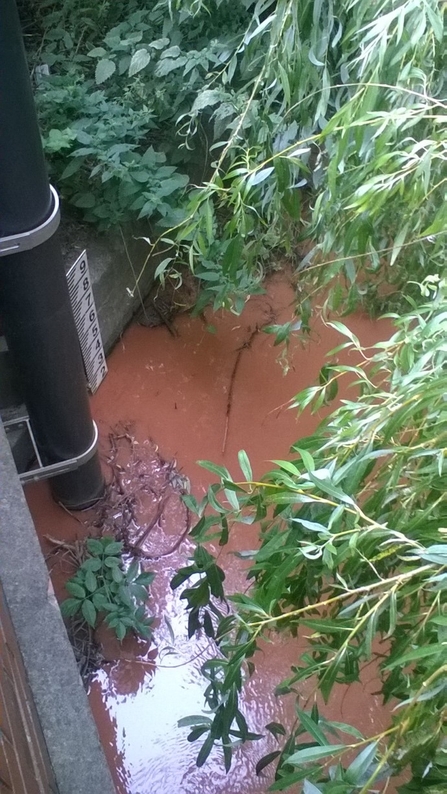
The level of the Brook had not risen against the stage board, so I knew the increase in suspended sediment was not due to an increase in flow.
I went to speak to Hereford Yazor Brooks Restoration Project (HYBRP) friends who live at the confluence of the Eign with the Wye; they came with me to a good viewpoint in their garden, where we clearly saw the plume of pollution entering the Wye Site of Special Scientific Interest.
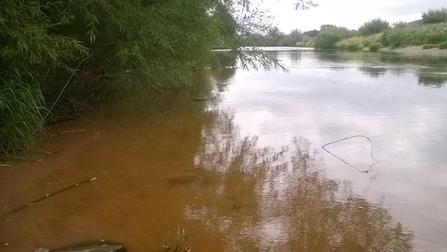
The Eign enters the Wye bottom left
The Eign enters the Wye bottom left.
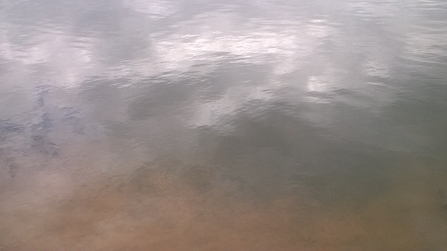
Clear Wye water at top of photograph, polluted Eign water at bottom of photograph.
I started to search for the source of the pollution and ascertained that it was downstream of the Hospital helipad, because that site had clear water.
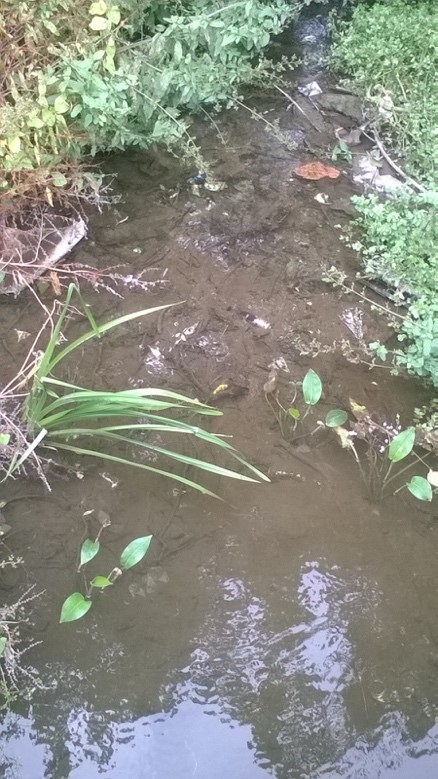
Much rubbish near the helipad, but the water is clear.
Looking with another friend of HYBRP, downstream at Rockfield Allotments, we thought that the pollution source might be an outfall pipe from the allotment site, just downstream of the railway bridge over the Brook. This proved not to be the case when I investigated upstream of the railway bridge that evening, and found conclusive evidence that the pollution was coming from the outfall of a storm drain from the southern end of the Hospital site.

Outfall top left, clear water from upstream on right, pollution bottom left.
I rang the Environment Agency incident hotline around 20:00 and reported the incident, which was given the number 01982906. I provided a precise grid reference for the location of the outfall. I also reported the incident to the Estates and Engineering Manager at Wye Valley NHS Trust, who responded promptly.
An Environment Agency officer visited the site on Tuesday, August 17th and found that the origin of the pollution was drilling operations by Centrica to install a ground source heat pump on the Hospital site. The planning application has many details, with inputs from a wide range of people, although neither the Environment Agency nor HWT were on the list of consultees; the application may be examined here:
Drilling operations were immediately ceased, and alternative measures were put in place to dispose of the fine sediment produced by them. The EA officer told me that Centrica thought that the contaminated water was going into a sewer, not a storm drain; they said that they had not seen the discolouration of the Eign Brook because it is hidden from the work site by dense vegetation.
A thick layer of fine sediment has been deposited over the entire length of the Eign Brook from the Hospital outfall to the confluence with the Wye. HYBRP has been exposing the gravels on the bed of the City brooks to increased light and oxygen, which has increased biodiversity; the deposited fine sediment from the drilling has smothered the gravels and creates an anaerobic environment that has already reduced “Riverfly” invertebrate indicator species diversity on the Eign Brook downstream of the Hospital, as shown by Anne Cottringer’s timely sampling and photographs such as this, which shows a finger stripe across a silt-smothered stone.
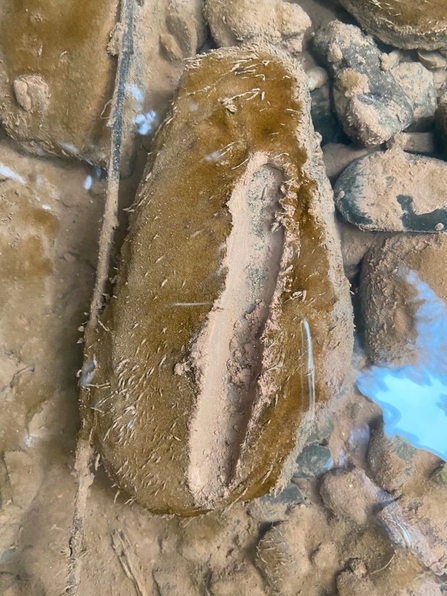
The silt-covered stone.
This pollution incident came only a month after the live streaming of George Monbiot’s much-viewed “Rivercide” documentary: https://www.youtube.com/watch?v=5ID0VAUNANA
There have been many responses to the incident by a wide range of individuals and organisations. The Environment Agency do not have the resources to mount a prosecution of Centrica. The reporting of the incident in the paper edition of the Hereford Times was inaccurate, and Anne Cottringer has pointed this out and asked for corrections to be printed; meanwhile, the Hereford Times’ online reporting was more accurate.
In response to Richard Fishbourne’s request for funding for HYBRP from Centrica, Chris Gale, Projects Director at the company sent this message (abridged here):
Thank you for your recent email seeking our support for Hereford Yazor Brooks Restoration Project. This has been passed to me for a response.
Unfortunately, Centrica is unable to support the project. As you can image, we receive many funding requests and sadly, it’s not possible for us to support everyone who gets in touch.
Nevertheless, we would be grateful for the opportunity to meet with you and your team to discuss your vital work in protecting the local waterways and how we can mitigate any impact that our works have in the future.
As you will know, following the incident in August, we worked with the Environment Agency to agree revised working practices which will prevent this happening again.
As a result, we have sealed the drains during working hours to prevent any liquid from entering. Further to this, we have now created channels in the car park from the kerb line back to an open pit with a borehole that has previously been completed. Any muddy water is then power washed back into that pit which acts as a natural soakaway; each night the car park is left clean.
I’m sorry to send this disappointing reply but I hope you understand the reasons for our decision.
There is not space here to go into further detail on the incident or the responses; if you have questions or would like to support HYBRP’s work on the City Brooks, please contact HYBRP or HWT City Branch via their pages on the HWT website. The Rivercide documentary and the Eign Brook pollution incident underline the importance of the eyes on/hands on approach to wildlife conservation, alongside campaigning for environmental legislation to be enforced and strengthened.
With hindsight, HYBRP can see that Anne Cottringer’s historical WhatsApp post of 26th July drew attention to an odd discolouration of the Brook that was likely to have been related to an earlier discharge of silt-laden water from the Hospital outfall.
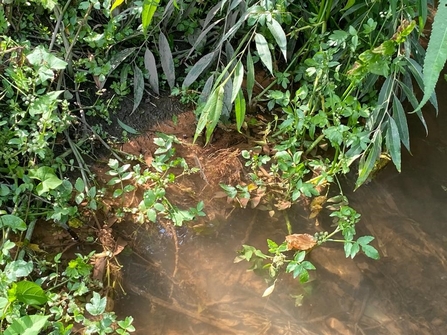
Anne Cottringer’s historical WhatsApp post of 26th July

